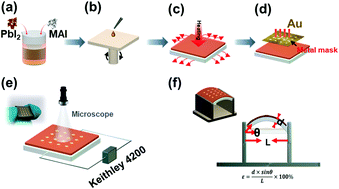Piezo-phototronic effect enhanced photodetectors based on MAPbI3 perovskite
Abstract
Recent research on hybrid organic–inorganic perovskites has greatly advanced the fields of photovoltaics, photodetection, and light emission. The emergence of piezotronics and piezo-phototronics has led to tremendous high-performance devices that are based on piezoelectric materials. Although many previous research studies were centered around single crystal hybrid perovskites, polycrystalline materials are easier to fabricate, such as by using a solution-process, and have many other advantages, e.g. low cost, low environmental requirements, and high conversion efficiency. So far, there are very few reports of piezotronically modulated polycrystalline perovskite devices. Here, a novel piezo-phototronic effect enhanced photodetector based on MAPbI3 polycrystalline perovskite is designed, fabricated, and subsequently characterized. With polycrystalline materials, it is seen that the device performances can be significantly enhanced using the piezo-phototronic effect. Moreover, the polycrystalline perovskite introduces unprecedented potential to fine tune the devices from weak to strong piezoelectric performance. Our study explores the possibility of using polycrystalline perovskites to create high performance strain-controlled piezo-phototronic devices, which will have promising applications in the internet of things, multifunctional micro/nanoelectromechanical devices and sensor networks.



 Please wait while we load your content...
Please wait while we load your content...